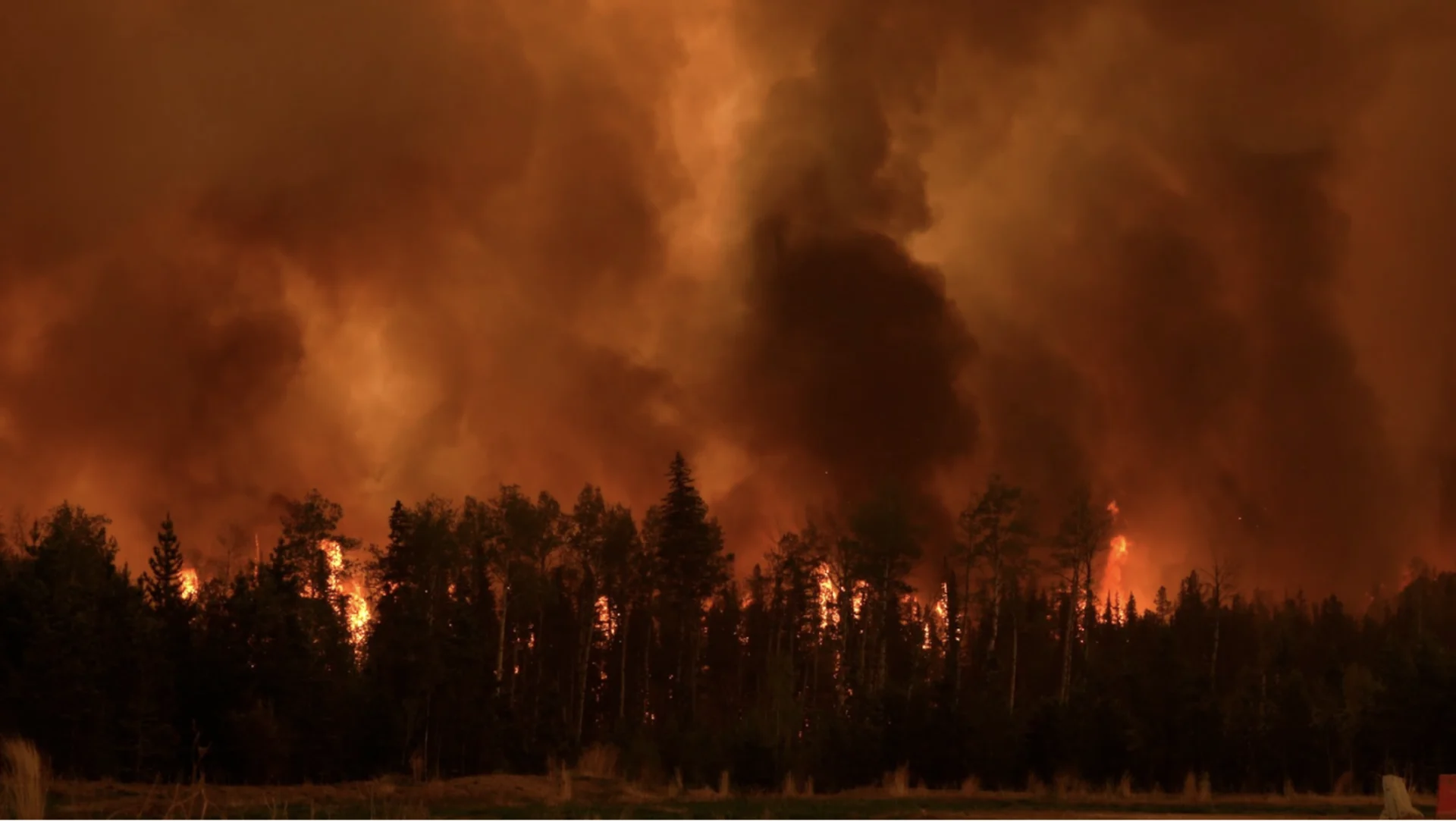
Albertans 'on edge' as focus shifts to 2024 wildfire season
'It was a firefight I never want to see again'
As dozens of blazes continue to burn in what has become a record-setting wildfire season in Alberta, some are already eyeing the 2024 season with concern.
“Absolutely, everybody is on edge,” said Yellowhead County Mayor Wade Williams.
According to Williams, 36 homes were lost in the county, which saw multiple communities evacuated more than once due to wildfires. By early May, the county was dealing with 200 km of fire fronts, Williams says, and within two months, 350,000 hectares of forest had burned in the county. County residents spent the entire summer on alert as several large blazes burned out of control near communities like Edson.
RELATED: Alberta smashes annual wildland burned record by mid-June
Now, as the spring and summer of 2024 inch closer, he shudders at the idea of having to go through it all again.
“Every direction we turned, we had more fires starting. It was a firefight I never want to see again,” Williams said.
“A lot of people are facing PTSD. If we had back-to-back years, I don’t even know how we’d survive that.”
But if typical El Niño weather patterns come to fruition through the winter and into the spring, Alberta could be at risk of another long-haul wildfire season.

Human-caused wildfires can start from abandoned campfires, downed power lines, unattended agricultural developmental burn piles, unsafely disposed of cigarettes and more. (Source: Alberta Wildfire)
According to Alberta Wildfire Information Officer Derrick Forsythe, “the most volatile time for wildfires is that window between when the snow melts and before the grass springs back to green.”
That window began early and was extended in 2023. Provincial data suggests snow was melting away as much as six weeks ahead of average. In the leadup to late April, when dozens of fires sprang to life in Alberta, well-below-average precipitation was observed in parts of the province. Then, in May, heat records were set in much of Alberta. Wildfires need fuel, and weather conditions like these promote the creation of dry, combustible plant matter.
And, while 2023 saw these conditions despite a transition from La Niña to El Niño climate patterns, meteorologists say the current, strong El Niño pattern being observed could set the stage for similar wildfire risk this coming spring.
Mild temperatures and below-normal precipitation are expected to dominate across Western Canada this winter, according to The Weather Network senior meteorologist Doug Gillham (though Gillham notes that potential does exist for periods of more snow and cold later in the winter).
Meanwhile, studies and analyses have concluded that El Niño patterns contributed to significant wildfire seasons in years past, such as 2016.
“It loads the cards in favour of a warm and dry winter. There’s been a number of studies that have shown fire seasons coming on the heels of an El Niño winter have been more active and aggressive,” British Columbia Wildfire Service Lead Forecaster Matt MacDonald told The Weather Network’s Mia Gordon. “It doesn’t look great."
SEE ALSO: Alberta clocks more 'smoke hours' than ever before
In total, the 2023 wildfire season saw more than 2.2 million hectares of forest burned in Alberta—far and away the biggest burn on record. The five-year average, according to Alberta Wildfire data, is around 207,000 hectares.

More than 38,000 Albertans were evacuated from their homes as emergency reception centres were mobilized across the province to welcome those fleeing the disasters. Environment Canada confirmed several regions saw their smokiest summers ever, in terms of the number of hours spent shrouded in smoke.
The Alberta government says the total cost of the wildfire season borne by the province won’t be released until the spring of 2024. $175 million has already been committed for disaster recovery alone by the province to help communities recover from uninsurable losses and from the costs of emergency operations.
Wade Williams says he’s joined a committee of Alberta’s rural community leaders who are planning to meet as the 2024 season approaches in hopes of best managing whatever situation does arise.
“We’re really hoping the province is ready. Fire season starts on March 1. Two months later is when our fires hit, and the province wasn’t ready. We didn’t have aircraft, we didn’t have bombers, and we didn’t have the helicopters we needed,” said Williams, who suggests the 2023 provincial election potentially impacted Alberta’s wildfire response in those early days.
“And during the first week we were trying to get help from the province, ministers, anybody who would listen to us to get us some help, but they had called the election on May 1, and because they were in election mode, a lot of these people were off the job. We couldn’t get the help we needed until we started finally getting a hold of the right people. We were delayed, I would say, by a week.”

A damaged property is seen in Brazeau County, Alberta in early May 2023 (Connor O’Donovan/The Weather Network)
In an emailed response, a spokesperson for Alberta’s Ministry of Forestry and Parks rejected the assertion that the election impacted fire suppression and added that it's already preparing for 2024.
“The Edson Forest Area issued a fire advisory on April 26 warning of elevated fire danger in the area and the need to exercise caution. A fire restriction was put in place on May 1, and radio advertisements were broadcast in the area informing the public,” spokesperson Pam Davinson wrote. “In preparing for the next fire season, Forestry and Parks will be focusing on expanding active hours of firefighting, streamlining recruitment, and ensuring preparedness earlier in the season. This year, Alberta Wildfire successfully utilized a number of new initiatives, including night operations for helicopters, using AI for wildfire occurrence predictions, and automated fire behaviour modelling software.”
WATCH | Over half of Alberta wildfires so far suspected to be human-caused:
Header image courtesy of Kyle Brittain.











